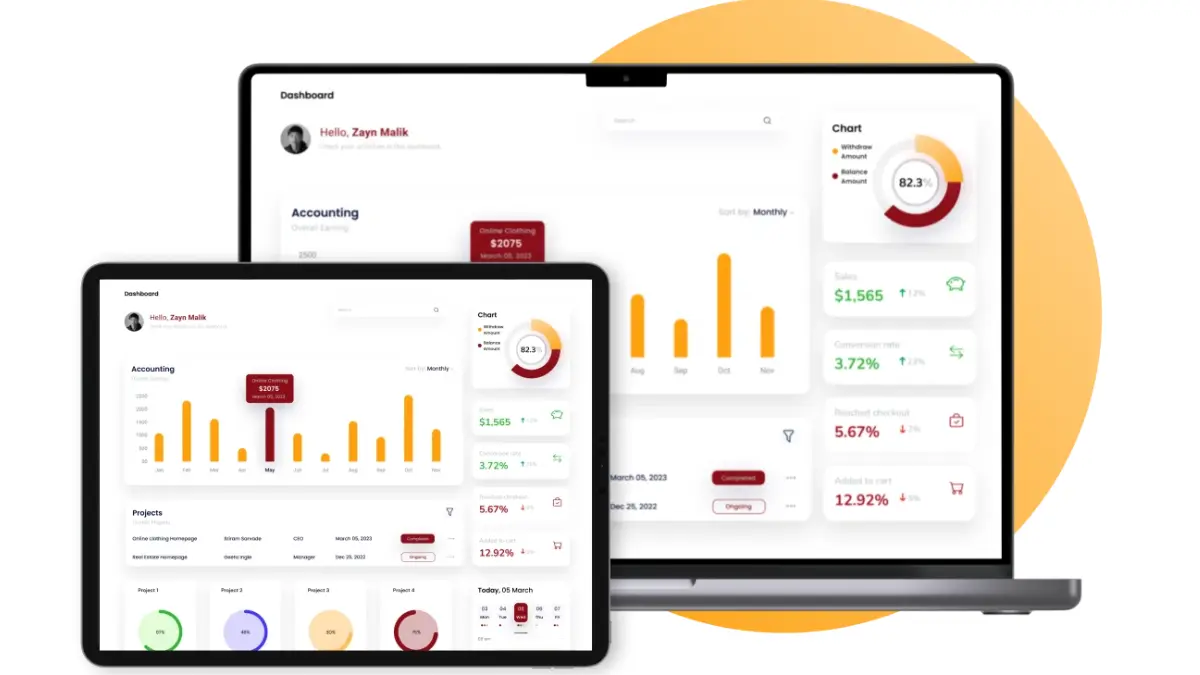Managing Request for Information (RFI) documents can be a daunting task for company managers and leaders. Without the right software, the RFI process often becomes cumbersome, with inconsistent supplier formats causing confusion and delays. Comparing vendor responses objectively is difficult, and handling multiple RFIs is time-consuming and overwhelming for procurement teams.
In today’s fast-evolving market, where competition is increasingly fierce, businesses must adopt automation to stay ahead. Procurement software can streamline these processes, enabling companies to manage RFIs more efficiently and focus on making strategic decisions instead of getting lost in manual paperwork.
According to a recent survey, businesses that implement digital tools for their RFI processes experience a 25% increase in the accuracy of supplier selection. This results in smoother, more reliable procurement decisions, helping companies save time and resources.
Are you ready to streamline your RFI process and make better-informed supplier choices? This article will provide comprehensive insights into Request for Information management, offering guidance for improving your procurement strategies in Singapore.

Key Takeaways
|
What is Request for Information?
Request for Information (RFI) is a document used to gather details about a product or service from suppliers. It provides insights into the service offerings of each supplier, allowing businesses to compare options and identify the most suitable partner.
Typically, an RFI is used early in the procurement process when the company is still exploring options. It includes specific questions related to the products or services needed, helping to identify which vendors are capable of delivering what is required. This document does not request a binding offer but rather seeks clarity on what suppliers can provide.
Furthermore, by using an RFI, companies can compare multiple vendors, analyze their offerings, and make more informed decisions before moving to more detailed stages like a Request for Proposal (RFP) or Request for Quotation (RFQ).
What is the Difference Between RFI, RFP, and RFQ?

Understanding the distinctions between RFI, RFP, and RFQ is vital for an effective procurement process. Each document serves a specific purpose, helping businesses gather the right information and make more informed choices.
With the right procurement system, managing RFI documents becomes more efficient by automating the process of collecting, organizing, and analyzing supplier data, ensuring businesses can swiftly respond to potential vendors while making better procurement decisions.
1. Request for Information (RFI)
An RFI is designed to help businesses explore various options in the market. It gathers general information from potential suppliers, providing an overview of available solutions. This document is often the first step in the procurement process, allowing the company to identify which vendors might be suitable before moving on to more detailed stages, such as the RFP or RFQ.
2. Request for Proposal (RFP)
An RFP is a tool used when a business needs suppliers to propose detailed solutions for a particular challenge or need. Unlike the exploratory nature of an RFI, the RFP is more focused and asks for in-depth information.
It provides the necessary context, outlines business objectives, and encourages suppliers to suggest innovative ways to meet the company’s requirements. Often, an RFP is used after the initial RFI stage to narrow down the pool of potential suppliers and seek more specific responses.
3. Request for Quotation (RFQ)
An RFQ is even more precise than an RFP. It focuses primarily on cost by asking suppliers to provide financial estimates based on very specific technical requirements. At this point, the business knows exactly what it needs, leaving little room for flexibility.
Suppliers are expected to give an accurate cost breakdown, making the RFQ useful when pricing becomes the primary factor in the decision-making process.
While not always mentioned, a Request for Tender (RFT) is another important part of the procurement process. It involves inviting suppliers to submit a sealed bid for specific goods or services. It is often used when the company is ready to make a purchasing decision and wants to ensure transparency and competitiveness.
When Should You Use an RFI, RFP, or RFQ?

Understanding when to use an RFI, RFP, or RFQ is crucial for ensuring a smooth procurement process. The decision depends on both the project stage and how well the buyer understands the problem and potential solutions. Let’s break it down.
1. When to use an RFI
If you’re in the early stages of a project and still exploring potential solutions, an RFI (Request for Information) is the best tool. This process allows you to gather insights about available suppliers, their general capabilities, and the solutions they offer.
It’s particularly useful when many possible solutions exist or if you haven’t fully defined your needs. An RFI helps you gain a clearer picture of the options, serving as a foundation for more detailed requests, like an RFP.
2. When to use an RFP
Once you’ve gathered enough information from the RFI, the next step is typically an RFP (Request for Proposal). The RFP digs deeper, allowing you to evaluate qualified vendors who responded to your RFI.
At this stage, you’re looking for more detailed proposals that outline how each vendor would solve your specific business challenge. The RFP also allows suppliers to collaborate with you by suggesting creative solutions within their offerings. This phase helps you narrow down your options to a shortlist of potential partners.
3. When to use an RFQ
The most specific and restrictive of the three is the RFQ (Request for Quotation). You’ll use this when you know exactly what you need, both in terms of the solution and the specifications. The RFQ is ideal when the project requirements are clear and your primary goal is to compare costs.
Since the RFQ is focused on precise pricing and technical details, it doesn’t leave much room for creativity. Instead, it allows you to quickly identify which vendor can meet your exact needs within your budget.
The choice between an RFI, RFP, or RFQ depends on how well you understand the challenge and potential solutions. Use an RFI to explore, an RFP to collaborate and shortlist, and an RFQ to lock in specific details and costs.
When selecting the right approach, it’s essential to align your strategy with clear goals and efficient tools. For streamlined processes, consider using HashMicro’s procurement ERP to manage your RFI documents effectively. Click the banner below to find out the right software price calculation to optimise your procurement costs.
What Information Should You Include in an RFI?

When creating a Request for Information (RFI), it’s important to focus on gathering the right level of information without overwhelming your suppliers. A well-structured RFI will give you a clearer understanding of potential suppliers while being simple enough for them to complete.
Here’s what you should include:
- Clear introduction and purpose: Begin by briefly explaining the purpose of the RFI and the project at hand. Suppliers need to know the context of your request and what you’re aiming to achieve. A concise introduction sets the stage and helps them align their responses to your needs.
- Basic company and project information: Providing basic details about your company and project is crucial. This includes your company’s name, industry, and an overview of the project or business challenge you’re addressing. Suppliers need this information to tailor their responses to your unique requirements.
- Key questions: Your RFI should include a list of key questions that will help you evaluate the supplier’s capabilities and offerings. These questions should focus on the supplier’s experience, general services, and potential solutions they can offer. Keep the questions straightforward—remember, an RFI is meant to gather general information, not in-depth proposals.
- Response guidelines: Make sure to outline how you expect suppliers to respond. Provide a clear format or template for their responses to ensure consistency and ease of evaluation. A well-organized RFI template will help suppliers stay on track and provide the information you need without unnecessary complexity.
- Submission deadline: Finally, always include a deadline for submissions. This ensures that suppliers respond promptly and allows you to keep your procurement process on schedule.
In summary, a successful RFI strikes a balance between gathering useful information and making it easy for suppliers to respond. By including clear questions, basic company details, and a simple template, you’ll encourage more responses and move closer to identifying the right supplier for your project.
How to Write an RFI Template

Writing an effective Request for Information (RFI) template is essential for gathering valuable insights from vendors. While the specifics of an RFI may vary across industries, the structure and flow of the document should follow a consistent approach to ensure clarity and ease of evaluation.
Below is a guide to help you format an effective RFI:
- Title and identification: Begin your RFI with a clear title, such as “Request for Information – [Project/Work Name].” This helps both your team and potential suppliers immediately identify the purpose of the document.
- Contact information: Provide your company’s details, including name, address, and a designated contact person. Don’t forget to include an email address and phone number to ensure easy communication with suppliers.
- Project/work description: Offer a brief overview of the project, its goals, scope, and limitations. This helps suppliers understand the context and what is expected in terms of deliverables.
- Evaluation criteria: Specify the technical requirements and qualifications that suppliers must meet. Include the key factors your team will use to assess their service offerings and solutions.
- Questions and responses: Create a list of detailed questions that suppliers need to answer, focusing on their capabilities and solutions. Make sure to include instructions on how and where to submit their responses.
- Response deadline: Clearly state the deadline for suppliers to submit their responses. Include both the date and time to avoid any misunderstandings and ensure timely submissions.
- Additional information: Provide any relevant additional details, such as cost limitations, data protection policies, or contract requirements. This ensures suppliers are fully informed and can tailor their responses accordingly.
By following this format, you ensure that your RFI is both comprehensive and easy for suppliers to respond to, ultimately improving your procurement decision-making process.
Streamline RFI Process with HashMicro’s Procurement Management System

HashMicro’s Procurement Management Software is one of the top software providers in Southeast Asia, renowned for its robust and efficient solutions. Its Procurement System has significantly improved business efficiency across various industries, particularly in managing RFI processes with precision and ease.
To explore how this solution can enhance your procurement operations, we invite you to sign up for a free demo. Experience firsthand how HashMicro’s system can simplify your RFI management while delivering real-time insights and automation.
HashMicro offers a comprehensive range of features such as:
- PO, RFQ, and PR management: This feature streamlines the management of purchase orders, RFQs, and PRs, allowing businesses to efficiently handle procurement requests and easily integrate them with the RFI process.
- PR approval management: Using this feature, companies can automate and track PR approvals, ensuring a seamless approval workflow that aligns with RFI responses for faster procurement decisions.
- Online portal for suppliers: This feature provides suppliers with an easy-to-use online portal, enabling smooth communication and RFI submissions for improved collaboration.
- Automatic vendor rating: By using this feature, businesses can automatically rate vendors based on RFI responses and performance, helping them select the best supplier for future procurement needs.
- Service work order tracking: This feature ensures accurate tracking of service work orders, which complements RFI management by monitoring the fulfillment of service-related procurement.
- Multi-purchase model: With this feature, businesses can implement various purchasing models that align with RFI outcomes, ensuring flexibility and scalability in procurement strategies.
- In-depth purchase analysis: This feature offers detailed insights into procurement activities, helping businesses assess the effectiveness of their RFI processes and make data-driven decisions.
- Direct purchase management: Using this feature, companies can efficiently manage direct purchases, streamlining procurement based on RFI results for quicker order fulfillment.
- Blanket order management: This feature simplifies the management of blanket orders, ensuring that long-term procurement agreements are informed by RFI data and supplier capabilities.
- Landed cost calculation: By utilizing this feature, businesses can accurately calculate landed costs, helping to refine RFI evaluations by considering total procurement expenses.
These features allow businesses to streamline procurement activities, saving time and reducing manual errors.
Moreover, HashMicro’s system is fully integrated with third-party systems and offers customization options to fit your unique business needs. Whether you need to connect with accounting or inventory software, HashMicro provides the flexibility to adapt as your business grows.
Conclusion
Understanding the importance of a Request for Information (RFI) is crucial for businesses, especially in today’s competitive landscape. In Singapore, advanced software solutions have made procurement processes more efficient by automating key steps and ensuring transparency across all stages.
By utilizing the right software, businesses can avoid common procurement challenges and unlock significant advantages. One of the leading solutions available is HashMicro’s Procurement Management Software, which offers an all-in-one platform designed to optimize purchasing decisions.
HashMicro has proven to be a reliable solution for many businesses in Singapore, offering comprehensive features such as automated vendor management, real-time tracking, and detailed reporting that streamline the entire procurement process.
To experience these benefits firsthand, we encourage you to try HashMicro’s free trial system and consultation services today and take the next step towards enhancing your procurement efficiency.
Warning: Undefined array key "med" in /home/hashmicr/public_html/blog/wp-content/plugins/insert-headers-and-footers/includes/class-wpcode-snippet-execute.php(419) : eval()'d code on line 281

FAQ About Request for Information
-
What is the request for information?
A request for information in business is an organized and formal request for the information necessary to complete a purchase or fulfill a contract. They can be paper or electronic, but they’re nearly always electronic documents in today’s business world.
-
What is the purpose of the information request?
Professionals use requests for information to seek details about a company and what products or services they can offer, often for a particular project. The purpose of sending an RFI can depend on the company’s needs and the progress of their current projects.
-
What are the benefits of request for information?
A request for information enables you to gather information through a formal process and compare it with other responses. With the RFI, you find out whether the vendor is capable enough to meet your procurement needs or not.
-
How do you request for information?
1. Review documents and drawings carefully: Ensure all relevant documents are thoroughly examined before proceeding.
2. Formulate clear questions: Develop specific and concise questions based on the information reviewed.
3. Use the appropriate format: Ensure your questions are submitted in the required format for consistency.
4. Review your queries: Double-check your queries for accuracy and completeness before sending.
5. Send your queries: Submit your finalized questions to the relevant parties.
6. Manage ongoing queries: Keep track of responses and follow up on any unanswered or unclear queries.
7. Convert queries into clarifications: Turn received responses into actionable clarifications and exclusions for further decision-making.













